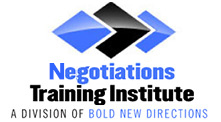Conflict is a part of life and people experience it all the time in their personal and professional lives. In the workplace, you are bringing together people from different backgrounds, geographical locations, cultural, and intellectual backgrounds, as well as differing viewpoints. Therefore, disagreements are bound to happen. Though it is a common occurrence, handling workplace conflict can be a bit of a challenge. It requires a delicate balance of assertiveness combined with professionalism. However, if left ignored, conflict in the workplace can be very costly. It could lead to company gossip, decreased morale, frustrated employees, and decreased productivity. It can even cause companies to lose good talent. That’s why good conflict resolution is vital to a successful workplace. Here are some helpful tips for managing and resolving workplace conflicts.
Identify the source of the problem
The first step in resolving conflict is identifying the source of the problem. Understanding the cause will help you better resolve the issue and prevent it from happening again. You need to speak with the involved parties individually and gather as much information as possible. Ask questions until you feel like you have a complete understanding of the issues at hand. Encourage the involved parties to describe their issues using “I” statements rather than “you” statements, encouraging them to focus on their own specific issues instead of people.
Be an attentive listener
Listen to what each person is saying rather than reacting. Allow the individual to speak freely about their feelings and issues without interrupting them. After the person has spoken, rephrase what they said to be sure you understood. Ask questions if needed in order to clarify their responses and take notes as needed.
Refer to the employee handbook
Your employee handbook should be your first point of reference regarding the issues at hand. This handbook serves as a guide for employee behavior and clearly states the desired expectations of the company. If the employee has violated the code of conduct, it is critical that you make them aware of this violation and hold them accountable for their actions. Employees should all be well aware of the company guidelines as well as possible disciplinary action.
Create a solution
As a leader, your role in resolving conflict is to identify employee needs and guide them to a fair solution that will satisfy all parties involved. You can brainstorm possible solutions with the involved parties and discuss the pros and cons of each solution. You want to look for a win-win scenario that both parties can agree on. Give the employees a chance to agree and move forward. If they cannot do this, you may have to suggest an alternative that they must both agree to.
Follow up
You should never assume the issue is completely resolved the minute you end the conversation. Rather, you need to check in regularly with the involved parties to ensure they are doing their part to meet the agreed upon goals. Keep an eye on the situation for a period of time and be ready to take necessary action if the situation does not resolve.
